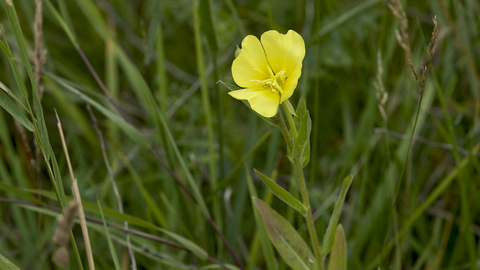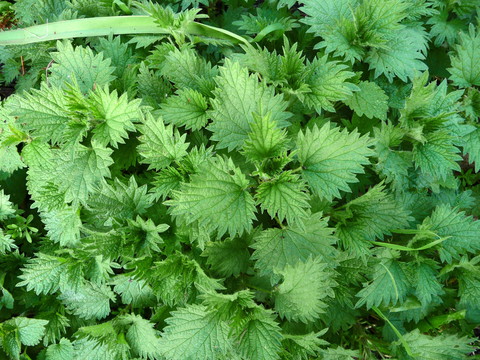One of the pictures I have taken on one of my walks; I do love the open sky of the countryside. A field in Wilden, Bedfordshire
There are many ways in which one can engage with nature. There are those that will sit in a hide with bated breath and binoculars in anticipation of spotting an elusive bird. There are others that will head out with a camera, hoping to capture the perfect shot. And some go no further than their own garden to get closer to nature, creating a space for plant and animal life where they live. For me, though I have time for these other activities, I have always loved roaming and rambling countryside footpaths as a way of getting closer to nature.
Then . . .
If memory serves me correctly (I took the picture a while ago), I took this photo in a field near Ravensden, Bedfordshire
I grew up in a small rural village, surrounded by public countryside footpaths. I didn't have much interest in the church or the two pubs located in the village, so perhaps it was inevitable I would gravitate toward long walks.
I was, and still am, something of an introvert, but there's a desire for the great outdoors beating strong within me too. And I was drawn to the footpaths that passed through and around the village where I grew up. In summer and spring they were dry and dusty, in the winter and autumn they were muddy and you had to be more careful as you navigated them. But, as long as the weather wasn't altogether too wet or windy, I roamed and rambled whatever the season.
The wildlife that I saw there always fascinated me. Foxes, deer, birds, and other animals had the power to make me stop and gasp. I'd hold my breath and want the moment to last. But I found other things on the footpaths too. I realised that when I walked them I wasn't as anxious, sad, angry, or overwhelmed. The footpaths were not just where I went to find nature, they were where I went to escape.
Now . . .
A view of River Great Ouse from a footpath somewhere near Great Barford, Bedfordshire
I am now thirty-*cough-cough-mumble* years old; my hair is thinner and almost everything else is thicker. When I walk footpaths these days, I try to ignore just how out of breath I get. But, my increased waistline aside, I still get much from the long walks I take. I still find peace and calm there.
Sometimes I immerse myself in the walks; listening, watching, smelling, touching, and, now and then, tasting the countryside around me. It's like meditation. Sometimes I talk to myself, working out a couple of things. Sometimes I sing a little while I walk. Sometimes I walk for hours, returning home pleasantly exhausted.
Now, I am better at identifying animals and plants I spot. I take pride in being able to identify a gatekeeper butterfly, and being able to tell the difference between them and meadow browns. I am proud of myself for being able to hear the piercing call of a red kite and know that it is indeed that bird of prey calling before I lay eyes on it soaring above me. I am proud of myself for retaining the facts that I have read and heard. But, however much I learn, it is the fleeting moments of peace and calm I encounter, and awe I feel in the presence of nature and wildlife, that keeps drawing me back to the paths I walk.
My long walks became more of a rarity for a while. Because of work, a bad relationship, and all sorts of other things in between, I watched the footpaths fade into the background of my life. However, in the last year or so, I have been reacquainting myself with them, and I find them still so fulfilling and full of beauty.
Though my life has changed, I still walk for many of the same reasons I always did. My love for nature and wildlife is a great part of it, as is my need for something outside of the day-to-day. A hope that it might just reduce my waistline has been added to the list now though.
In the future . . .
Rainwater sitting in the tyre tracks of a tractor in a field near Stevington, Bedfordshire
I have a lot to learn about nature and wildlife. There is still much that I see on these footpaths I walk that I don't understand or can't identify. So, I read books, join social media groups, research online, watch documentaries, read magazines, and take that knowledge with me when I engage with nature. It is important to me that I learn what I can about nature and wildlife for a very simple reason - I love and care about them. If you care for a thing, you have to take the time to understand it; when you understand a thing, you are in a better position to be what it needs you to be.
I did endeavour to begin a university course because of my love for animals. Unfortunately, life overwhelmed me, and I left it behind. Though, to be honest, I believe I chose the wrong course for me, and I was a little dissatisfied with the it anyway*.
A dream that I have had for almost as long as I can remember is that one day I will trek one of the long distance footpaths of the UK. Indeed, there is a long distance route that passes through my home county. The Ouse Valley Way route is 150 miles long and one could follow its path from where I live straight to the coast. However, that part of me that has a desire for the great outdoors and adventure is inhibited by the introverted me that seems to rule the roost.
Perhaps one day my sense of adventure will win out. I hope so. I would love to immerse myself into nature like that, to live with it long-term for a while. I'm not sure how to measure or quantify the rewards I think such an adventure would bestow upon me, but I expect that they would be profound. And I hope that one day I undertake the effort. Maybe, with a little money and/or a willing companion, I might just do so.
*The course was focused on working with animals in business settings (veterinary surgeries, zoos, etc.) rather than wildlife and ecology which would have much better suited my interests. I made a mistake.
I hope that you enjoyed this piece. If you did, you can buy me a coffee on Ko-fi - it may end up being the fuel that keeps me going on my next long walk! It will definitely keep me writing! All support is much appreciated and gratefully received - thank you!










.jpg)













